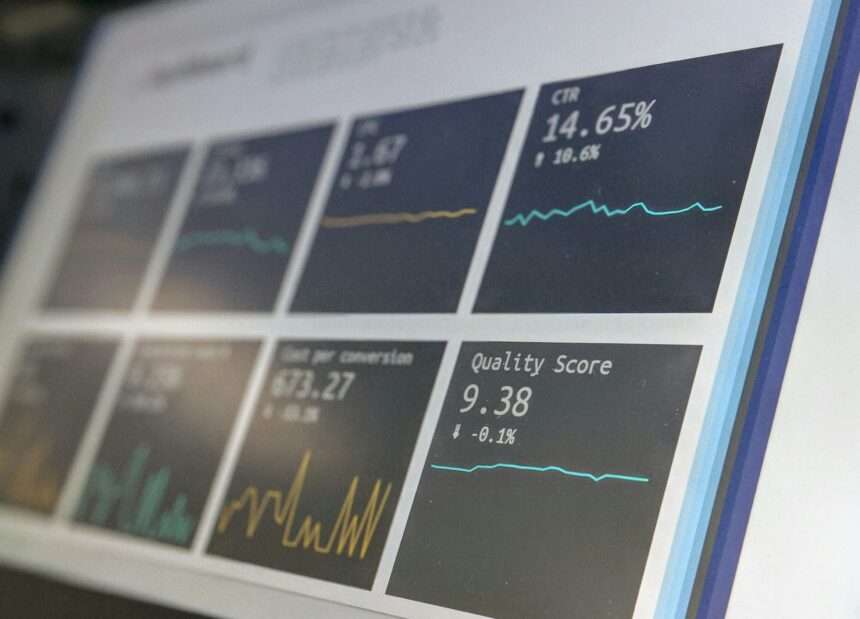Introduction
In 2025, global supply chains are facing unprecedented pressure—from geopolitical tensions and climate shocks to persistent labour disruption and tariff volatility. But amid this turbulence, a powerful ally has emerged: artificial intelligence. Organisations are now turning to AI to gain visibility, predict disruptions, optimise logistics flows and build resilience at scale. This article explores how AI is reshaping international supply chains, the risk mitigation strategies that matter, the technology driving change and what companies need to know to stay ahead.
- Introduction
- Why AI Is Critical for Supply‑Chain Resilience
- Key AI‑Driven Strategies in Global Logistics & Risk Mitigation
- Real‑time Visibility and Predictive Analytics
- Optimising Logistics Flows with Digital Twins & Route Intelligence
- Supplier Risk Modelling and Multi‑Tier Monitoring
- Data Fabric & Integration Across Global Ecosystems
- Sector‑by‑Sector Impacts and Use Cases
- What Organisations Must Do to Make AI Work
- Emerging Trends to Watch in 2025
- Challenges & Risk Factors
- Start Now
- Final Thoughts
- Source Links
Why AI Is Critical for Supply‑Chain Resilience
Traditionally, supply‑chain managers responded reactively to disruptions—after a port closure, a flood or a factory strike. Now, AI is enabling proactive strategies. For example:
- According to the World Economic Forum, the era of “surprise disruptions” is ending: AI‑enabled platforms are giving companies high‑resolution visibility into global flows, supplier risk and logistics pinch‑points. World Economic Forum
- A survey by Ivalua found that 98% of organisations with mature AI supply‑chain tools say they feel prepared for geopolitical disruption—compared with 0% of those with no AI plans. Ivalua
- Studies show the global AI in logistics market reached about US$ 20.8 billion in 2025, growing at ~45.6% CAGR—signalling that logistics firms now see AI as essential, not optional. DocShipper
In short: AI is becoming the backbone of global logistics operations—and the companies that embrace it are gaining strategic advantage.
Key AI‑Driven Strategies in Global Logistics & Risk Mitigation
Real‑time Visibility and Predictive Analytics
AI systems knit together data from suppliers, shipping, ports, transit hubs, weather, and geopolitics. The result: earlier warnings about disruptions, smarter routing decisions and faster recovery options. For example, graph‑neural‑network approaches are now being used in pilot studies to infer resilience in high‑complexity supply networks. arXiv
Optimising Logistics Flows with Digital Twins & Route Intelligence
Digital twin models and AI predictive engines now simulate multiple shipping, warehousing and production scenarios: What if a key chip foundry is hit by a blackout? What if a key sea‑lane is blocked? These tools help firms optimise for cost, time and risk. Using AI to optimise routing and inventory reduces wasted time, fuel and shipment error. Xeneta+1
Supplier Risk Modelling and Multi‑Tier Monitoring
Moves toward broader supply‑chain visibility mean firms are using AI to monitor not just Tier‑1 suppliers, but upstream tiers: geopolitical exposures, labour‑risks, materials scarcity and financial stress. AI triggers alerts if a link in the chain becomes vulnerable. Defense Logistics Agency+1
Data Fabric & Integration Across Global Ecosystems
To make AI meaningful in complex international networks, companies are layering data fabrics that unify systems across regions, clouds and partners. This integration enables end‑to‑end intelligence and orchestration of global logistics. Institute for Supply Management
Sector‑by‑Sector Impacts and Use Cases
- Manufacturing & Electronics – Chip shortages and component scarcity are being mitigated by AI‑based supplier scoring and scenario modelling.
- Retail & E‑commerce – Real‑time demand shifts and last‑mile delivery disruptions are being managed with AI‑optimised routing, inventory displacement and warehouse automation.
- Automotive & Heavy Goods – AI monitors key raw‑material shipments, identifies supply‑chain bottlenecks, and triggers alternate sourcing strategies in real time.
- Defence & Critical Infrastructure – Agencies like the Defense Logistics Agency (DLA) are using AI to predict risk scenarios and ensure logistics continuity in contested environments. Defense Logistics Agency
What Organisations Must Do to Make AI Work
- Invest in Data Foundations – High‑quality, integrated data is non‑negotiable. Without it, AI models falter.
- Build Pilot‑to‑Scale Roadmaps – Start with targeted use‑cases (e.g., shipment‑delay prediction) then scale across logistics network.
- Operate Globally, Govern Locally – International supply chains require awareness of regional regulation, data sovereignty and trade‑compliance risk.
- Foster Talent & Partner Ecosystems – Logistics teams now need data analysts, AI engineers, and collaboration with tech vendors and supply‑chain partners.
- Embed Risk‑Monitoring Culture – AI gives visibility, but leadership must act on insights. Risk mitigation only works if decisions follow analysis.
Emerging Trends to Watch in 2025
- Edge‑AI in logistics hubs – Autonomous vehicles, drone deliveries and AI‑powered warehousing are increasingly deployed at remote locations.
- Generative AI for scenario simulation – Logistics planners use “what‑if” AI tools to test disruptions like cyber‑attacks, titan storms or trade‑embargoes.
- Sustainability as core logic – AI models now factor sustainability KPIs (Scope‑3, carbon footprint, circular economy) into logistics optimisation. KPMG
- Collaborative supply‑chain networks – Shared platforms with federated learning enable visibility across competitors while maintaining data privacy. arXiv
Challenges & Risk Factors
- **Data Silos & Interoperability **– Fragmented global systems make unified AI difficult. Integration remains a major hurdle.
- **Skill Gaps **– Logistics teams often lack AI‑native talent; hiring and training become strategic initiatives.
- **Ethical & Compliance Issues **– AI decisions can affect suppliers and communities; transparency, fairness and regulatory compliance matter.
- **Cost‑Benefit Realisation **– Many firms struggle to turn pilot AI use‑cases into full network‑wide value. Xeneta
- **Cyber & Supply‑Chain Threats **– AI helps defend, but also becomes a target; secure AI operations are essential.
Start Now
- Map your global supply‑chain landscape: Tier‑1 to Tier‑N.
- Identify 1‑2 high‑impact AI use‑cases: e.g., predictive delay alerts, alternative sourcing.
- Pilot with trusted partners and track key metrics: lead‑time reduction, disruption cost avoidance, on‑time delivery.
- Scale by building reusable data fabrics, analytics systems and cross‑functional teams.
- Monitor continuously: disruptions evolve, so the AI strategy must evolve too.
Final Thoughts
International logistics in 2025 is no longer about moving goods from A to B—it’s about moving goods through uncertainty with intelligence, agility and resilience. AI gives the edge to companies that expect disruption—and prepare for it. The window is open: adopting AI now is a strategic imperative, not a convenience.
Call to Action:
Is your supply‑chain intelligence lagging? Start today: audit your data, pick a pilot, invest in talent and partner with AI‑capable platforms. Build the proactive logistics engine your global business needs.
Source Links
- AI will protect global supply chains from the next major shock – World Economic Forum World Economic Forum
- Utilisation of Artificial Intelligence (AI) to Illuminate Supply Chain Risk – Defense Logistics Agency Defense Logistics Agency
- Supply Chain News Roundup: Scaling Advanced Analytics and AI Successfully – Inside Supply Management Institute for Supply Management
- The Biggest Global Supply Chain Risks of 2025 – Xeneta Xeneta
- How AI is Changing Logistics & Supply Chain in 2025 – DocShipper DocShipper
- AI‑Ready Supply Chains Prove More Resilient Amid Rising Global Risk – Ivalua Ivalua
- Six Supply Chain Trends to Watch in 2025 – KPMG KPMG









